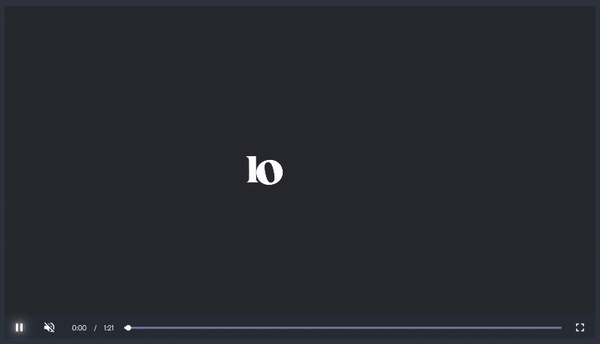ResTech = Research Technology. Like MarTech, AdTech and EdTech. I’m not sure I like it, but I’m going to go with it.
All Business Stories Start with an Apple
It’s January 1983.
The Apple Lisa has just launched.
Over at Xerox PARC, people are grousing that it’s a derivative product. They say its ‘innovations’ – GUI, mouse, document-centric computing – have all been copied from the Xerox Star.
The Lisa tanked. But it paved the way for the Macintosh launch in January 1984. What follows is the most fabled story in the history of tech – and the most valuable company in the world.
Xerox PARC created some amazing solutions; but its copier industry legacy stopped it from fully grasping the PC opportunity. Jobs and Wosniak had a different vision; they made the connections … “they were able to connect experiences they had and synthesize new things.”
What the hell does this have to do with today’s Research Tech industry and a small startup from London?
It’s because I can already hear the Xerox PARC voices in our industry – the chorus of objections to what follows below.
“It’s just a survey tool … there are hundreds like it … what’s the big deal … we do all that stuff already … “
If that’s your response, I have a jar full of blue pills for you.
Red pill people, climb on board.
Ten ResTech Lessons from Loops

I’ve never used Loops. It might be a terrible product. I’d even forgotten I knew the founder.
He’s actually just taken a paid listing in the Insight Platforms directory, so we do now have a commercial relationship; but don’t interpret anything below as shameless boosterism on behalf of a customer.
This article was mostly written before he signed up.
Whether you’re planning your own ResTech product or have an existing solution in-market, these are valuable lessons you can apply to your own business.
1. Create for Specific Customers

ResTech customers come in many shapes and sizes, but most of our industry defaults to two primary personas: enterprise research teams and agencies.
The biggest growth segments are actually non-expert users: marketing, product, operations and other teams.
Loops is very clearly positioned clearly for three specific audiences: product managers, brand managers and graphic designers. It lays out the use cases, benefits and workflows for each group.
By implication, it also excludes the non-core target.
This is a key attribute of successful software products: they know who they don’t want as users – as well as who they do.
2. Focus on Outcomes, not Inputs

The core benefit statement for Loops is 100% focused on what matters to the target users: make brilliant creative work.
Many ResTech pitches talk about the intermediate steps to generating value (use our platform to test your ads) or research process benefits (test more, test quicker, test for less budget). None of these land a knockout punch for users who are focused on outcomes. Unless your target customer is also measured on stuff that doesn’t matter that much either …
The rest of the proposition statement is also very tight, with two levels of how Loops helps to make brilliant creative: with insights and iteration (the high level ‘how’) based on ‘honest opinions’ … ‘in minutes’ … ‘in a few clicks’ (next level ‘how’ that anticipates barriers and knocks them over).
3. Less is More

Great software propositions – like great ads, novels or works of art – owe much of their greatness to what they leave out.
Most ResTech websites, sales pitches, user journeys, knowledge bases and interfaces would benefit from this subtractive philosophy.
Go through and take out all unnecessary words, steps, buttons – and then rinse and repeat. Keep whittling down until you have something that works for busy, impatient, lay users.

There’s a reason most SEO tools encourage you to simplify language on website copy. ‘User experience’ (AKA readability) is a key component in Google’s algorithm; search optimises for simplicity and speed. It’s not about dumbing down, it’s about cutting through
The simplicity of Loops process flow (4 steps) is clear to anyone. It’s jargon-free. And it can be understood by a 12 year old.
Don’t believe me? Paste the URL into a website readability tool like this one.
4. Integrations will be Table Stakes for ResTech Apps

ResTech – specifically market research software – is a poorly integrated ecosystem. It’s getting better (Hello Fuel Cycle), but by and large our industry’s apps and data are islands.
Design / UX Research and CX apps are far stronger at embedding in the workflows and systems of their users.
Just look at usability testing tools like Maze and UserTesting; site analytics and feedback tools like Hotjar or Pendo; and CX feedback ecosystems like the Qualtrics XM Directory.
Loops deals with this in a single, fuss-free claim. It’s almost as if it’s not a big deal.
5. Show the Product and the Pricing

As someone who looks at a LOT of ResTech websites, I get really frustrated – like monitor-slapping cross – at the opacity of some of the companies in our industry.
So what does your app actually do? What does it look like? How much does it cost?
It’s almost as if you want customers to leave. Or you want qualify out all but the most tenacious. Or you want just spend more on your salary budget for sales teams to answer simple questions and do basic product walkthroughs.
Loops puts a short (80 sec) demo video above the fold; and it syncs to the four simple process steps (you remember – the ones a 12 year old can understand).
There is a prominent pricing table:

And it even includes the thorny issue of sample costs with flat rate per respondent pricing clearly explained in the FAQ.

6. Give the Product Away

Free trial and Freemium models are late catching on in ResTech. Most platforms hide their pricing, let alone give people a DIY route to getting hands-on experience.
It doesn’t even have to be a generous free tier. Loop’s is pretty stingy:

But: the benefits of giving free access are innumerable:
- Let users self-qualify: if it’s not right for them, they can decide – without wasting your sales team’s time
- Allow users to build habits; when they hit the free tier limits, it’s easier to pay for the familiar than to start from scratch on another tool
- Get usage data to inform your roadmap.
… and about a dozen more. At the end of the day, the incremental cost of another software user is close to zero; done right, this is a no-brainer.
Yes, I know: the Product-Led Growth model is not appropriate for every type of ResTech business. That doesn’t make you a blue pill type.
But make sure you explore it, borrow from it and apply the lessons – before rejecting it outright.
7. Reduce Friction Everywhere

Get started for free. A clear, singular Call to Action that is always visible – on any page, wherever you scroll.
Good SaaS propositions remove friction throughout the journey – before signup, during trial, using the product, upgrading … friction is your enemy. Slay it.
8. Make it Gorgeous

Visual design has been long neglected in ResTech applications. That sad legacy still burdens many of today’s solutions.
Visual identity matters: layout, colour palette, font pairings. These are all essential visual cues that say ‘this is a modern technology platform‘.
Loops uses bold contrasting block colours (like Dropbox), mixes Serif and Sans Serif fonts (like Mailchimp), has a simple brand name that could easily become a verb (like Slack).
And it uses friendly emoji-style graphics to communicate personality and reinforce that this is a ‘consumerised‘ B2B app (I’m easy to use, nothing to fear, no need to be an expert).
9. Be Transparent

Public roadmaps and product boards are a fantastic resource.
They say to users, ‘we want your input – this is a dialogue‘ and they bring up creative ideas that internal teams would never think of.
10. Be in the Right Places

When launching a new ResTech app, you need users quickly – to validate your idea, confirm product/market fit, give you feedback and generate usage data.
This may mean going outside the usual industry channels – especially if your target users are not traditional research types.
If you want to appeal to early adopters, get on Product Hunt. This is actually where I saw Loops. If you want to get paying users, get on AppSumo.
There are plenty more non-standard distribution channels to reach the growing audience of lay users.
So What Makes This ResTech App so Radical?
Much of what you see on Loops is standard practice across the B2B SaaS world – especially with niche MarTech applications like this.
But it is largely absent from our industry – even from many of the leading ResTech platforms.
And the Xerox PARCer blue pill types are right: there is nothing radical about the underlying proposition, the technology or any of the 10 features I’ve picked out.
But that’s really the point: good innovation isn’t always about something radically new or being first to market; it’s about combining elements in a fresh way that hits the mark for the target customer.
“Creativity is just connecting things. When you ask creative people how they did something, they feel a little guilty because they didn’t really do it, they just saw something. It seemed obvious to them after a while. That’s because they were able to connect experiences they’ve had and synthesise new things.”
Steve Jobs on creativity
Only someone who lacks imagination would end an article like this with a quote from Steve Jobs. Sorry.
Still, don’t let that put you off.

